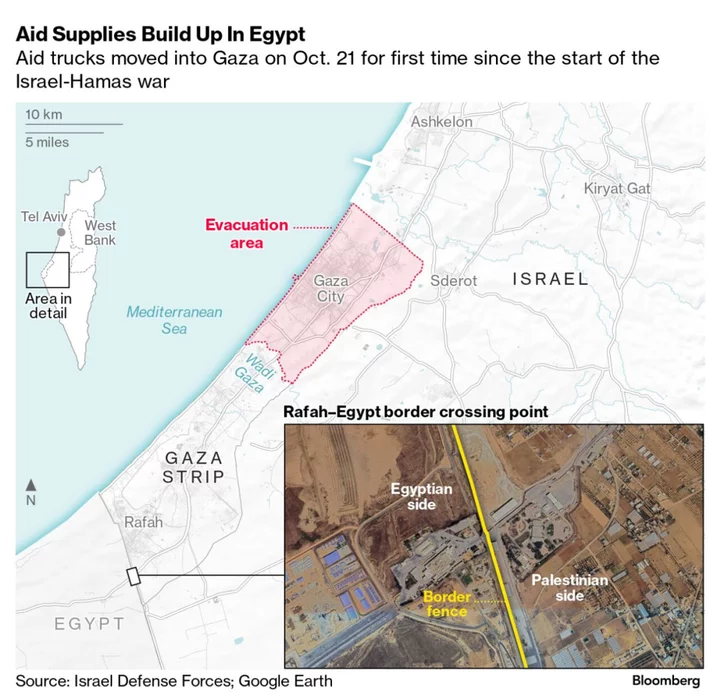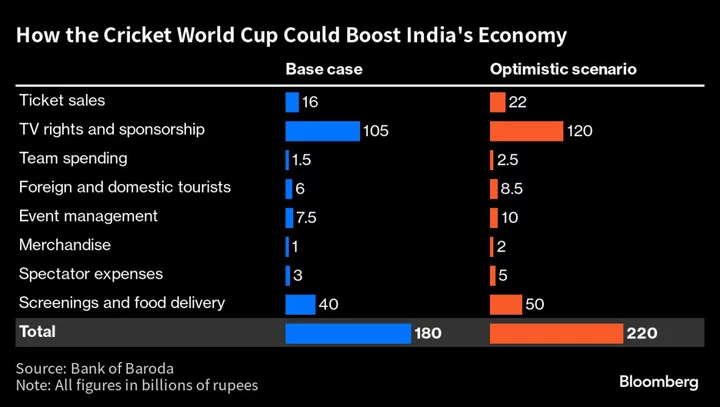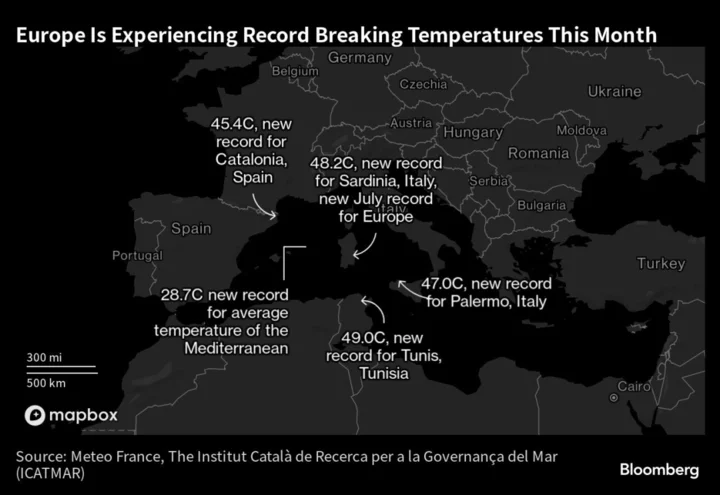Israel’s goal of defeating Hamas is more ambitious than ever before, yet a new long-term military approach aimed at limiting its own casualties may draw further international concern over the humanitarian crisis in Gaza.
The ground campaign to destroy those that run the Gaza Strip — following the deadly incursion by the Palestinian militant group into Israel in early October — involves armed forces moving gradually into the crowded enclave while backed up by tanks and artillery.
The Israeli military said Tuesday that two soldiers were killed in combat in northern Gaza, the army’s first reported fatalities since the start of the ground offensive on Friday. Meanwhile, Gaza’s Hamas-run Health Ministry said a series of Israeli airstrikes on a crowded refugee camp had killed and wounded hundreds, one of the deadliest single assaults since the aerial bombardment began more than three weeks ago.
Airstrikes, which have pummeled Gaza since the Oct. 7 attacks, continue and have already claimed more than 8,500 Palestinian lives, according to Hamas-led health authorities.
On the ground, armored vehicles are reported by residents to be on the outskirts of Gaza City, several kilometers across the border, while Israeli forces attacked a Hamas outpost, killing dozens of militants, the army spokesman’s unit said in a text message Tuesday.
Read More: Israel Latest: Iran Says Need to Use ‘Last’ Chance to Halt War
The upshot of this gradual strategy is the Israeli military and government are primed — and are priming the public — for a campaign that will take months, not weeks.
“Israel is proceeding very gradually, very carefully, cautiously as it wants to make sure there are minimum casualties,” Yossi Kuperwasser, a former top military intelligence official, said by phone. “Israel believes it is not under any time pressure.”
That contrasts with 2014, when Israel’s army surged into the Gaza Strip following 10 days of aerial bombardment, triggering a fierce battle in a densely-populated urban neighborhood where Hamas was dug in. More than a dozen soldiers died. Before a cease-fire took hold a few weeks later, the army death toll rose to 66, drawing criticism within Israel.
Go Slow
The gradual progress of the present campaign is intended to avoid pitched fighting in built-up areas, while troops are wary of approaching the vast network of secret subterranean tunnels in which Hamas hides. The go-slow tactics may succeed in limiting Israeli military losses and potentially civilian deaths, yet risk prolonging a war.
There’s also a shift of focus away from negotiating over hostages, of which about 240 were taken by Hamas, which is designated a terrorist group by the US and European Union. On Tuesday Israel said there’s no deal within sight to free more of the captives via Qatari mediation.
The unprecedented civilian death toll from Israeli bombing since the Hamas attacks has sparked growing international criticism, while leading to a dire humanitarian crisis that has left more than 60% of Gaza’s 2.2 million population displaced. A blockade of fuel and power supplies by Israel alongside limited water and food have added to their plight.
That’s complicating Israel’s goal of destroying Hamas and its leadership after the Iranian-supported group staged the deadliest single-day attack in the country’s history. Several thousand fighters broke through a heavily-guarded security fence and rampaged through communities and military bases in southern Israel, killing 1,400 people and abducting 240 others.
Aid Flows
Israel is about to increase the amount of aid allowed into Gaza from Egypt to 100 trucks a day — still a fifth of the pre-war level — said Strategic Affairs Minister Ron Dermer. The military campaign should start to exact fewer civilian casualties due to focused fire on the north of Gaza, where Hamas military forces are based, he added. Israel had urged Gazans to flee to the south, although air strikes are continuing there as well.
Israel seems on track to establish a buffer zone between the country and Gaza a couple of kilometers deep to ensure future attacks on its territory can’t happen, according to officials.
But successfully dislodging Hamas from Gaza could take more than a year, according to Amir Avivi, a former brigadier general who was involved in preparations for the 2014 Gaza war. “We need to spend months and months dismantling all this infrastructure,” he said by phone after meetings with Netanyahu and top military officials as head of an association of former and reserve members of the security forces.
The challenge that Israel faces in Gaza is magnified by the tunnel network, which Hamas says extends for several hundred kilometers and is equipped with ventilation shafts and electricity. Some reach a depth of 35 meters and can even have railroad tracks and communication rooms, according to experts. The entrance to them often lies in residential buildings or other public facilities.
Read More: Hamas’ Secret Tunnel Network Complicates Israel’s Gaza Offensive
Using robots to explore the tunnel complex can reduce risks. But, due to confined spaces, booby traps and greater knowledge by Hamas of the underground environment, Israeli troops who try to enter are at a severe disadvantage. Another complication is Hamas has said it’s keeping hostages underground, making it more hazardous to bomb the complexes.
‘Blood Price’
“Hamas is counting on us entering every bunker and every tunnel in order to exact a heavy blood price from us,” former Israeli Prime Minister Naftali Bennett said on X, the social media platform formerly known as Twitter. He called for a long siege to “suffocate the Hamas terrorists in the tunnels until they are forced to leave.”
Since the war started, Hamas has continued to use the underground system to attempt attacks, both on land and by sea.
Because of international and domestic pressure, Israel will need to scale back the offensive after a few weeks and then rely on more targeted missions for an extended period, according to Manuel Trajtenberg, executive director of the Tel Aviv-based Institute for National Security Studies, a think tank.
“At no point are we thinking of a massive occupation,” he said.
--With assistance from Ethan Bronner and Gina Turner.
(Updates with two Israeli soldiers killed in third paragraph)









